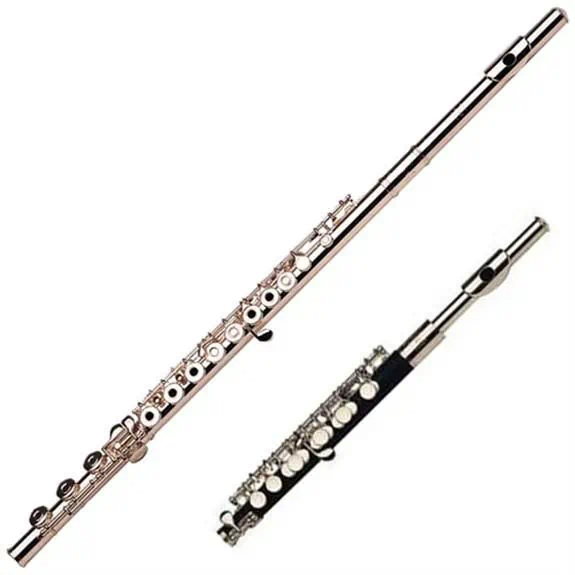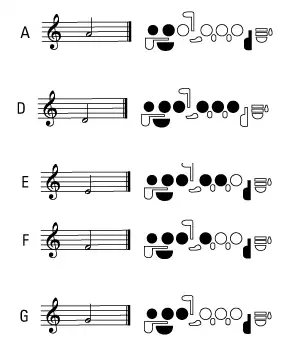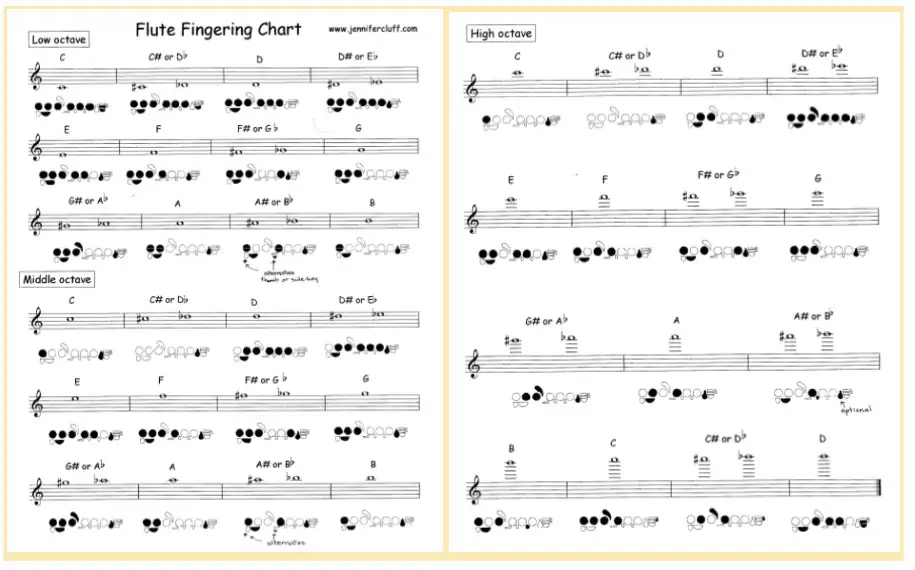how to play the piccolo
Exactly what is your next part of finding out how to have fun with the Piccolo?
Now that you have purchased your piccolo – what’s next? Learning how to play the piccolo might be a very good start… This part of our ‘Beginner’s Guide To Learning the Piccolo’ will start you off in the appropriate path.

Piccolos and Flutes - Main Differences

- The piccolo sounds one octave higher than the flute even though the music is written at the same pitch as the flute – this makes the piccolo a transposing instrument.
- The piccolo is much shorter than the flute so you don’t use as much air when you blow down the piccolo – don’t be fooled into thinking your breath control is not as important though, you still need good breaths to support your sound and stay in tune!
- As the hole in the headjoint is much smaller than a flute you need to make a smaller hole between your lips too – imagine your airstream is like a laser beam.
- You should put your piccolo a little higher on your lip to improve the sound – this is the thing most people forget when they swap between piccolo and flute.
The good news is that despite all these differences pretty much all notes on the piccolo use the same fingerings as the flute. This means that if you have already played the flute then you have a big head start!
Breathing
Like all wind instruments, you make a sound on the piccolo by using your breath. It is important to take relaxed, deep breaths by dropping your jaw and breathing into the bottom of your lungs. You can try this without a piccolo first if you like!
Making A Sound
If you can already play the flute then you can skip this step!
Making a sound on the piccolo is just like blowing across a tiny glass bottle. The trick is to keep your lips relaxed and in neutral shape. Then you blow through a tiny hole between your lips. It can sometimes help to imagine you are saying the word ‘pu’ to find the right shape with your lips.
Making a sound on the piccolo can take a little time so be patient. It’s best to try for a few minutes and then take a rest so you don’t feel too dizzy at first. Your brain and lungs will get used to breathing deeply after a few weeks of playing.
How to Play Different Notes On Your Piccolo
Now you can make a sound with your head joint the next step is to try with your full piccolo. Your left hand should be closest to the head joint with your right hand further down the piccolo. The numbers on the picture above tell you which finger goes on each key. Your left-hand thumb goes on the B key and your little finger of your right-hand goes on the Eb key. Start off by finding the fingers for the note B as shown in the fingering chart below.

For this note, you use your left-hand 1st finger and thumb and you use your right-hand little finger. Your right-hand thumb doesn’t press down any keys but rests under the piccolo.
Once you feel confident playing B you can gradually press more keys to play down to a low D., In general, the more fingers you put down, the lower the note should sound. As you add more fingers you will have to blow a little more as your air has to travel further down the flute. However, don’t blow too hard or the note might end up too high.

Congratulations! You can now play 6 notes on the piccolo!
Let’s learn 2 more notes so you can play all the notes in the lowest register of the piccolo. C can be a little tricky as you only have 2 fingers down for this note – your first finger of your left hand and your little finger. Taking your left-hand thumb off can feel a little scary at first but should feel easier with a little practice.

D is the last note of the low register and you play it using the fingers as shown below.

Take your time to get comfortable with these finger combinations as these are the basis of many higher notes on the piccolo. Playing long notes is a great idea to improve your sound quality and breath control. Remember to keep your shoulders relaxed.
Now you can play a full octave on the piccolo, your next step is to learn how to play higher notes by changing how you blow into the piccolo. The good news is that many of the fingerings you have already learnt stay the same for these higher notes.
High Notes On The Piccolo
E to C in the middle register of the piccolo use exactly the same fingerings as the lower register. You just have to change the way you blow to find these sparkling high notes.
Top Tips For Playing High Notes:
- Use your bottom lip to direct the air up
- Blow more air than for the lower octave
- Think about your air moving faster
To play high notes on the piccolo you move your bottom lip forward to direct your air higher. Instead of your air going straight forward, it will go diagonally up instead.
When playing high notes make sure you take big, relaxed breaths so you can use this air to blow lots of fast air into the piccolo. This will help you play beautiful high notes with a clear, open sound.
Use this fingering chart to learn how to play all the low, middle and high register notes on the piccolo – it is unusual to find a piccolo specific chart as most people use flute charts. The higher you want to play, the higher you aim your airstream and the harder you blow across the piccolo.

How To Play the Piccolo - Summary
By now, you should be able to:
- know that although the piccolo shares a lot with the flute – it definitely has its own identity and not all flute techniques will work the same on the piccolo.
- know that the sound of the piccolo comes from blowing air across the lip plate/hole.
- know that breathing is very important – piccolo players need a lot of air to support their sound!
- try and stand tall and keep your head straight to improve your sound and posture
- know that a standard piccolo has a range from D above middle C to the D 3 octaves above.
- keep your shoulders relaxed, especially when you breathe in.
Now it’s time to improve your technique…
About the Author
Chloë Vincent
Chloë is a graduate of the Guildhall School and concert highlights include the BRIT awards with Billie Eilish, The Who at Wembley Stadium and performing for the Queen at Buckingham Palace. Chloë regularly records at studios such as Abbey Road, working for artists such as Kanye West, Madonna and Michael Kiwanuka as well as film sessions. Orchestral work covers tours of China and Japan and performing at the Musikverein in Vienna. Chloë lives in Oxfordshire with her trumpeter husband and enjoys cooking and playing board games in her spare time.
Twitter - @chloeflute
Other posts by this author
Twitter - @chloeflute
Obtain Access To A Myriad Of Amusing Musical Things
Did you miss out last Friday? It only occurs once per week, and unless you’re subscribed, you’ll not learn about the spectacular stuff I’ve found for you this week.
Every Friday, I’ll give you a short email in order to treat you to a handful of the fantastic items that I’ve recently discovered.
Songs. Performers. Products. Equipment.
Having the ability to tour the whole world means I’ve experienced stuff I’d never imagine. And that’s what I’d like to share with you. So just click below to get entry right now.
Read the next post in this series:




